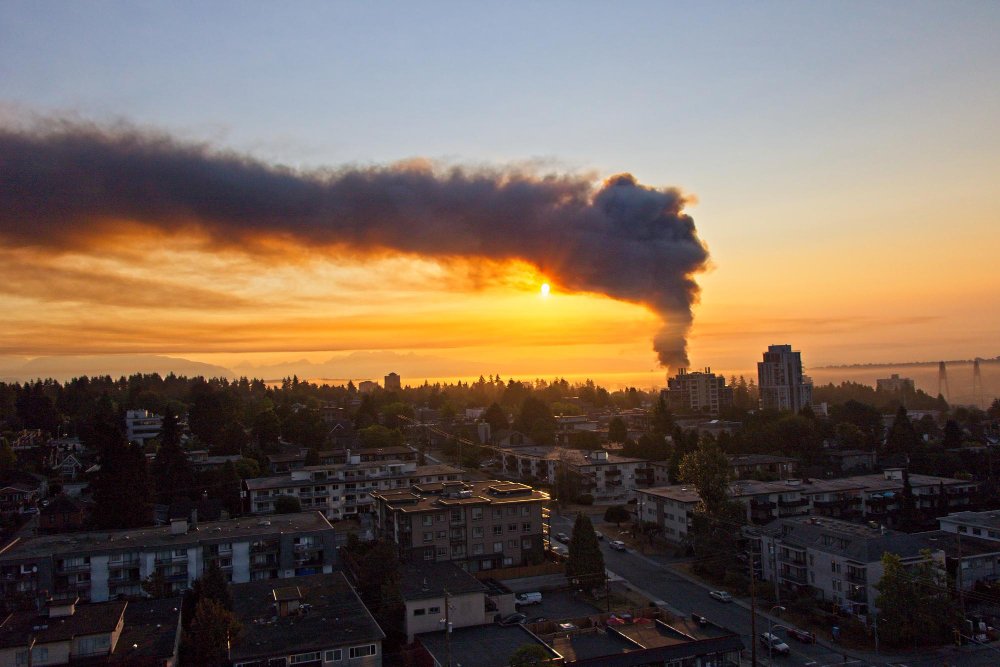
Carbon monoxide detectors are crucial safety devices that can save lives by alerting residents to dangerous gas levels. In California, specific laws mandate their installation in homes with attached garages, fuel-burning appliances, or other risk factors. This guide explains the legal requirements, proper placement, and maintenance of detectors to protect your home from carbon monoxide poisoning risks.
Understanding these regulations is vital not only for safety but also for compliance with state laws. If you or someone you know has been affected by CO poisoning due to negligence, carbon monoxide poisoning attorneys can help guide you through the legal process.
What Are Carbon Monoxide Detectors?
Carbon monoxide detectors sense elevated levels of CO and alert occupants through audible or visual alarms. Unlike smoke detectors, these focus on detecting an odorless and invisible gas, making it hard to identify without specialized equipment. Modern devices may feature digital displays, battery-operated or hardwired functionalities, and even smart home integrations for advanced monitoring.
California law mandates the installation of these detectors in residential areas, particularly in homes with attached garages, fireplaces, or fuel-burning appliances. Single-family homes and multi-dwelling units alike require compliance. Placement guidelines recommend installing them outside sleeping areas, and on every level of the home where required by law.
Why Are Carbon Monoxide Detectors Important?
These devices serve as a critical alert system, potentially saving lives when dangerous CO builds up indoors. Exposure symptoms like dizziness, nausea, or confusion may escalate without timely detection, leading to poisoning or worse outcomes. According to the CDC, over 400 deaths in the U.S. each year result from unintentional CO poisoning, demonstrating the importance of proper safeguards.
For California residents, understanding placement requirements boosts household safety and legal adherence. Inspectors and landlords must install carbon monoxide alarms where necessary to meet state codes. In multi-unit dwellings, noncompliance could expose owners to liability concerns or lawsuits.
Victims of CO poisoning caused by negligence may seek legal recourse. Reaching out to experienced carbon monoxide poisoning attorneys ensures injured parties can address concerns regarding medical costs or claims for damages. Reliable legal help becomes particularly vital if property owners neglect required safety measures.
California Laws On Carbon Monoxide Detectors

California law mandates carbon monoxide detectors in certain properties to safeguard residents from the risks of CO poisoning. Compliance ensures homes and commercial spaces remain safe and legally protected.
Residential Requirements
Every dwelling unit with an attached garage or a fuel-burning appliance must have carbon monoxide detectors installed. This includes single-family homes, multifamily rental units, and condominiums. Detectors should be placed outside each sleeping area and on every level of a home, including basements. Specific placement may depend on the layout, ensuring the device effectively alerts occupants to elevated gas levels. Regulations do not apply to homes without attached garages or fuel-burning devices. Accurate installation helps meet legal requirements and enhances safety.
Commercial Property Regulations
For commercial buildings, requirements differ based on property usage. Hotels, motels, and specific care facilities must comply with regulations if their heating systems or appliances involve fuel combustion. Detectors must be strategically placed near equipment rooms, guest areas, and other locations where CO exposure could occur. While not all businesses fall under these rules, understanding the criteria helps owners avoid liability concerns. Compliance for commercial properties aligns with guidelines designed to protect public health.
Penalties For Non-Compliance
Failing to install legally required carbon monoxide detectors invites legal and financial consequences. Property owners may face fines, civil liability, or even criminal penalties in cases of proven negligence. And, can you sue for carbon monoxide poisoning? Yes, victims of CO poisoning due to negligence or non-compliance can pursue legal action to seek compensation for medical expenses, damages, and other costs. Carbon monoxide poisoning lawyers can assist in holding property owners accountable for failing to meet safety regulations.
Exceptions And Special Cases
California law includes certain exceptions to the requirement for carbon monoxide detectors, taking into account specific property types and unique circumstances. These exceptions and considerations can affect homeowners, renters, and landlords differently.
Exemptions Under The Law
Carbon monoxide detector regulations don’t apply uniformly to all properties. Structures without fuel-burning appliances, such as all-electric homes, are generally excluded from this requirement. Similarly, homes not connected to an attached garage are also exempt. Multi-family buildings may not need detectors in spaces without sleeping quarters or fuel-based equipment, like storage units or detached common areas.
Temporary housing, such as seasonal rental units, may also fall outside the scope of this mandate, provided no CO-producing devices are present. Owners of properties questioning their specific obligations can consult legal professionals or review state housing codes to clarify responsibilities. Legal expertise is especially valuable if compliance disputes arise.
Considerations For Renters And Landlords
In most cases, renters aren’t directly responsible for installing carbon monoxide detectors, yet they ensure devices remain functional. Lease agreements often outline a tenant’s responsibility to report malfunctions or maintenance needs. By notifying landlords promptly, tenants ensure their living environment remains safe.
On the other hand, landlords must confirm compliance with California regulations before leasing properties. They are responsible for outfitting units with detectors in compliance with placement guidelines and ensuring a working device is installed near each sleeping area and on every floor where CO risks exist. For peace of mind, landlords might seek guidance from legal professionals to confirm adherence to local laws.
Victims of carbon monoxide poisoning due to non-compliance have grounds to pursue legal action. Tennant lawyers specializing in carbon monoxide cases can advise and help individuals hold negligent parties accountable.
Conclusion
California’s strict carbon monoxide detector regulations reflect the state’s commitment to public safety. These devices play a critical role in preventing tragedies caused by this invisible threat. Property owners can safeguard lives while avoiding penalties by adhering to legal requirements and maintaining functional detectors. Tenants and homeowners alike should remain vigilant, ensuring their living spaces are equipped with properly installed and maintained detectors. Prioritizing compliance and safety measures protects individuals and fosters a healthier, more secure environment for everyone.
FAQ
Do Landlords Have to Provide Carbon Monoxide Detectors in California?
Yes, landlords must provide and maintain carbon monoxide detectors in rental properties with attached garages or fuel-burning appliances, ensuring compliance with state regulations.
Where Are CO2 Detectors Required in California?
CO2 detectors are required outside sleeping areas and on every level of a home, including basements, in homes with attached garages or fuel-burning appliances.
What Is the Code for Carbon Monoxide Alarms in California?
California Health and Safety Code § 13262 defines “carbon monoxide device” and outlines requirements for installation in dwelling units with fossil fuel-burning appliances or attached garages.
When Did Carbon Monoxide Detectors Become Required in California?
Carbon monoxide detectors became mandatory in California for newly constructed homes in 2011 and for existing homes by 2013 under the state’s health and safety codes.



